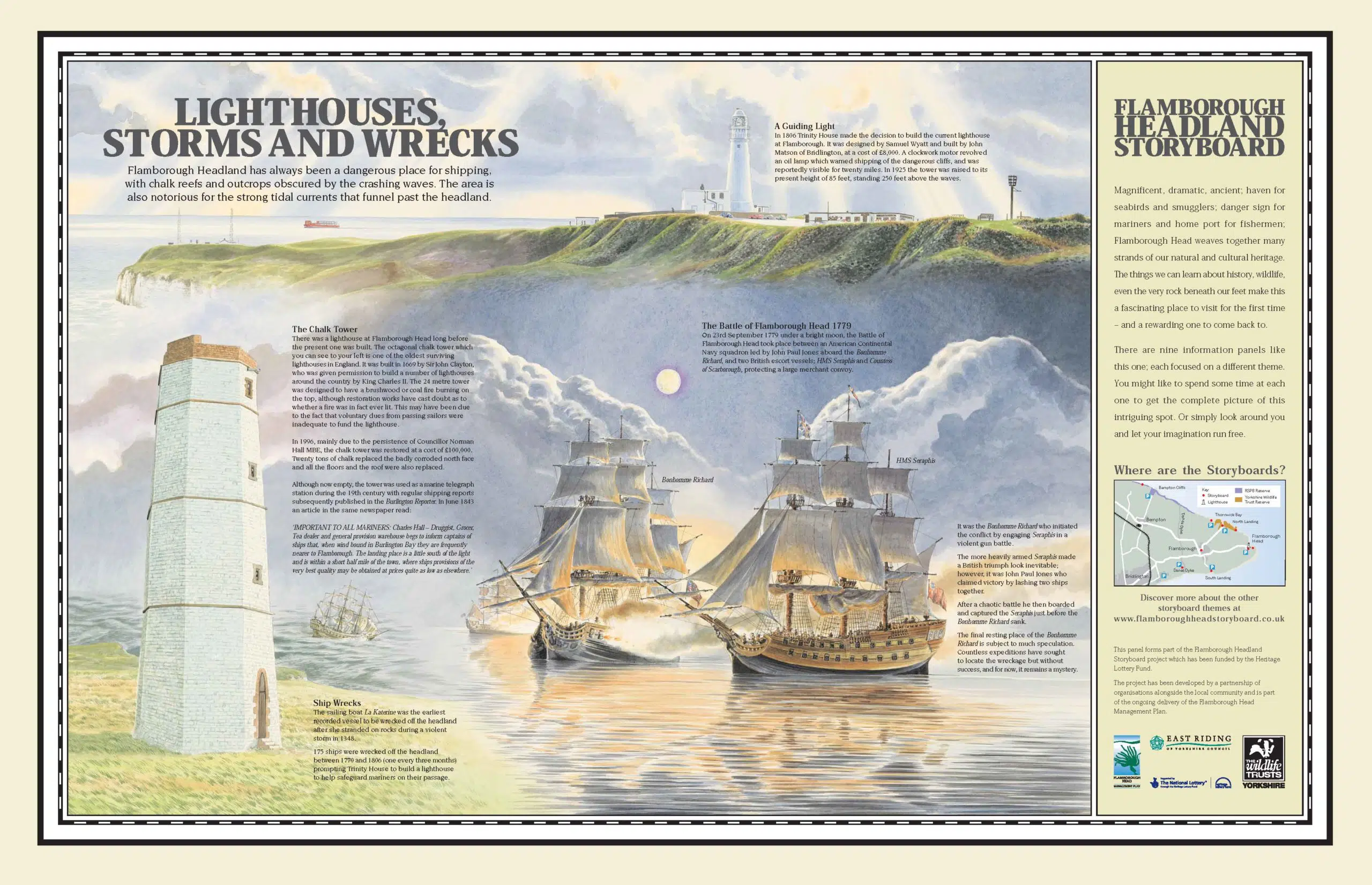Lighthouses, Storms and Wrecks
The earliest recorded vessel to be wrecked off the headland was in 1348 when La Katerine, a sailing boat, stranded on the rocks during a raging storm. The octagonal chalk tower on the headland is in fact the oldest surviving lighthouse in England. It was built in 1674 by Sir John Clayton, who was given permission to build three light towers around the country by King Charles II. However, Clayton went bankrupt before he could build the other two. The tower was designed for a coal or brushwood fire to be lit on its top but whether it was ever used is a mystery. In 1996, the tower was restored using twenty tons of chalk to restore the badly corroded north face and all the floors and roof were replaced. A local group has been formed to share the story of the original chalk tower and open the historic building up to visitors for the first time.
Between 1770 and 1806 approximately 175 ships were wrecked off the headland (one every twelve weeks). In 1806 Trinity House were convinced that a lighthouse would help prevent further disasters and so the Flamborough Lighthouse was designed and built at a cost of £8000. A clockwork motor revolved an oil lamp which warned shipping of the dangerous cliffs and was reportedly visible for twenty miles. In 1925 the tower was raised to its present height of 85 feet, standing 250 feet above the waves.
The Lighthouses, Storms and Wrecks Storyboard, standing in the Lighthouse car park, tells the story of the infamous Battle of Flamborough Head 1779 and the importance of the Lighthouse even to this day. Visitors can climb the 119 steps to the take in the magnificent views of the headland and beyond, by booking a tour.
Back to all Storyboards
Click here
